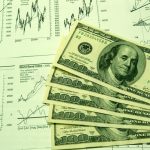USDJPY declines, as the market absorbs a more dovish Fed. The Greenback suffered from the likelihood of fewer rate increases in the future.
USDJPY suffers from the Fed’s stance on interest rates
As European trade began on Thursday, the US Dollar was trading near 7-week lows against the Yen. After the Federal Reserve decided to increase interest rates once more. The US dollar experienced a period of widespread decline.
Higher interest rates are typically thought to support currencies, so this may seem a little counterintuitive. But the Fed weighed in with some more cautious comments. In the wake of clear strains on the domestic US banking sector.
USDJPY may have a temporary weakening
The central bank scaled back its forecast for probable future policy actions, or forward guidance. On Wed, Chair Jerome Powell suggested that it might be time to further tighten up policy.
His previous position, which held that a continuous process of increases was probably essential, was expressed in a much less forceful manner. In the wake of Silicon Valley Bank’s failure and the extension of credit lifelines to another lender, First Republic. Powell made a point of assuring the world that the US financial sector is still strong.
Tankan survey of Japan is bearish for Japan in the medium-term
It’s less shocking that the Dollar should decline given the likelihood of fewer rate increases in the future, and sure enough. The ‘USD’ side of USDJPY has carried most of the weight through the European session.
The closely tracked Reuters “Tankan” poll revealed that the mood at the nation’s major manufacturers was depressing over a third straight month. Which was some troubling news from Japan.
Understandably, sentiment is dampened by ongoing concerns about the state of the world’s demand. Along with the potential harm that persistent weakness. There could pose to Japan’s formidable export engine However, it’s probable that the USDJPY will continue to be significantly influenced by US interest rate prospects and their ripple effects on Treasury bond yields.
Technical Perspective
The fourth Fibonacci retracement of the duos rises from the lows of Jan 16 to the peaks of March 8. Where it is presently finding support. It is currently at 131.264 and has so far held on a daily ending basis.
Despite being tested during the previous 4 sessions by Greenback bears. However, they were able to move the pair below it during intraday trade, This, level is still very near to the live market and clearly in danger.
There will be strong concerns that a “head and shoulders” formation is developing on the daily graph. Which may indicate further falls even if bulls manage to hold the line. According to this scenario, the price action near the present levels last occurred on Feb 7 and 8.
Daily Indicators
| Name | Value | Action |
| RSI(14) | 38.960 | Sell |
| STOCH(9,6) | 22.717 | Sell |
| STOCHRSI(14) | 5.717 | Oversold |
| MACD(12,26) | -0.350 | Sell |
| ADX(14) | 41.328 | Sell |
| Williams %R | -89.193 | Oversold |
| CCI(14) | -117.7733 | Sell |
| ATR(14) | 1.9243 | High Volatility |
| Highs/Lows(14) | -1.7114 | Sell |
| Ultimate Oscillator | 49.653 | Neutral |
| ROC | -3.404 | Sell |
| Bull/Bear Power(13) | -4.3300 | Sell |
| Buy: 0
Sell: 8 Neutral: 1 Summary: Sell |
||









